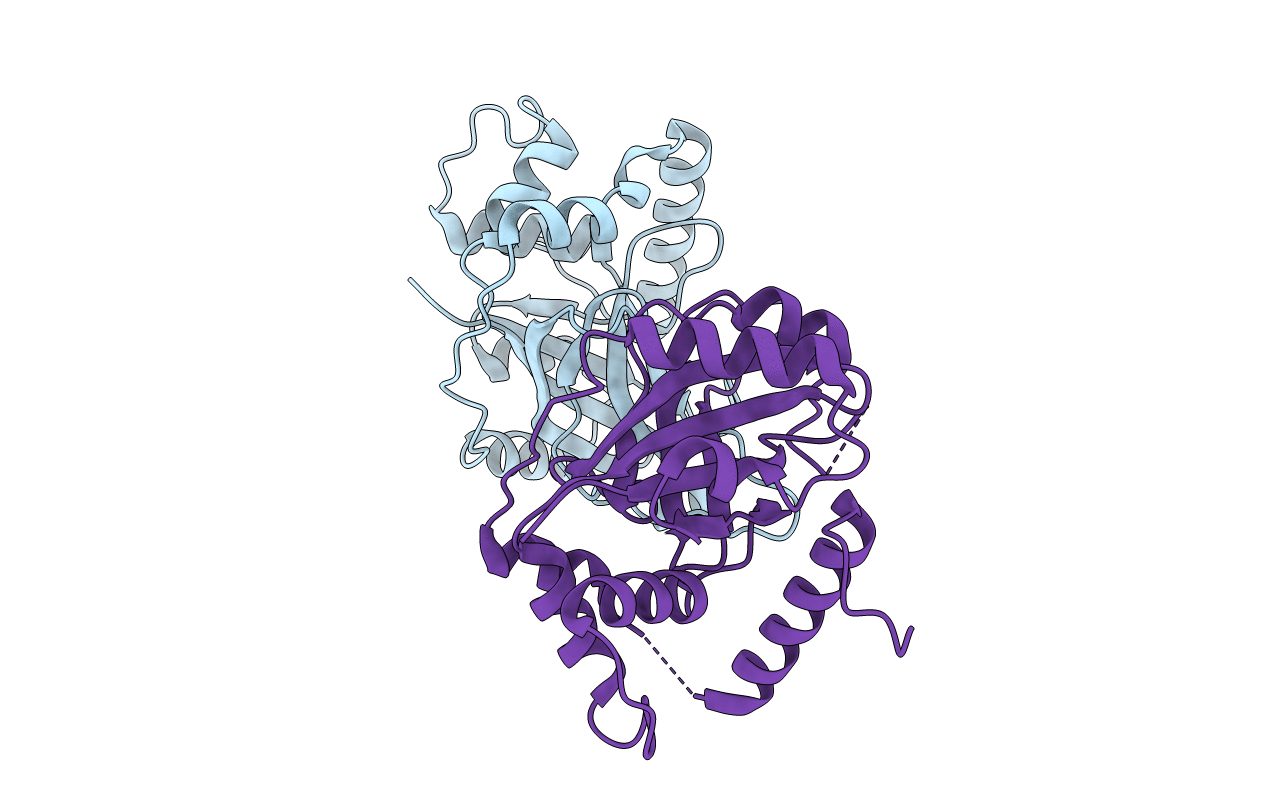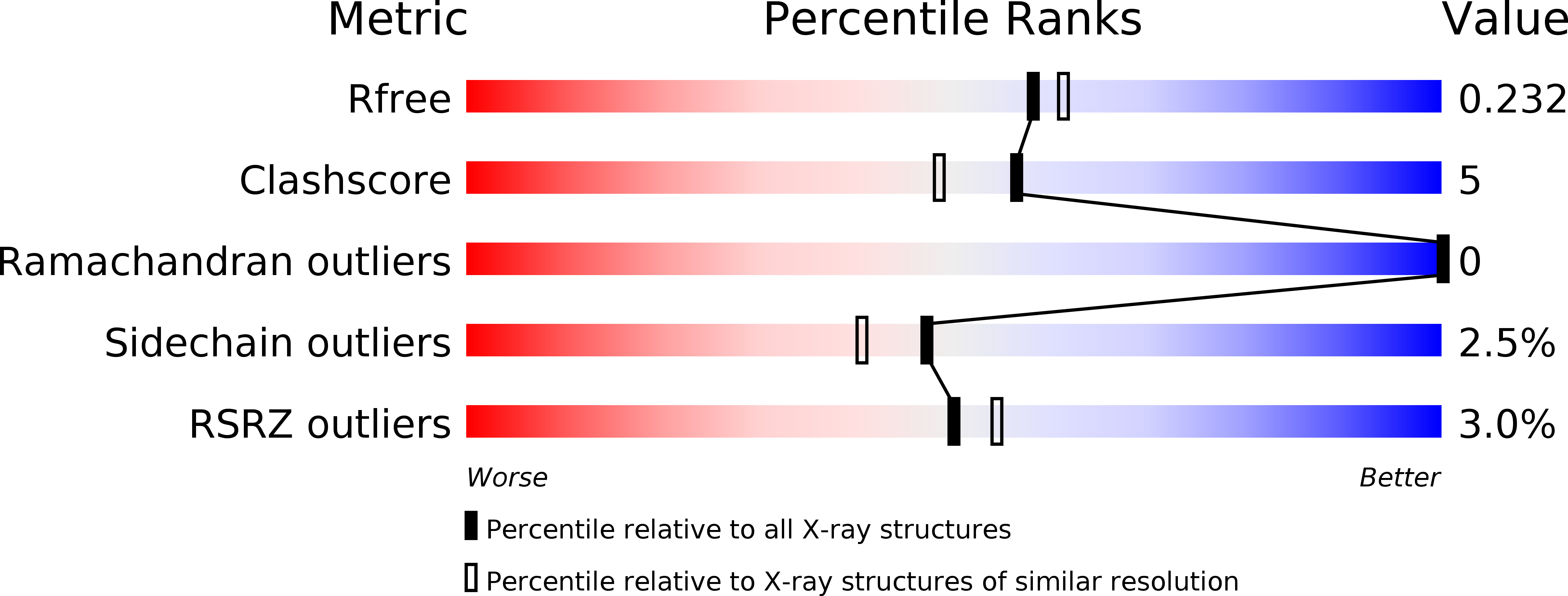
Deposition Date
2014-09-18
Release Date
2015-07-15
Last Version Date
2024-01-10
Entry Detail
PDB ID:
4V0T
Keywords:
Title:
Monomeric pseudorabies virus protease pUL26N at 2.1 A resolution
Biological Source:
Source Organism:
SUID HERPESVIRUS 1 (Taxon ID: 10345)
Host Organism:
Method Details:
Experimental Method:
Resolution:
2.05 Å
R-Value Free:
0.22
R-Value Work:
0.17
R-Value Observed:
0.18
Space Group:
P 21 21 21


